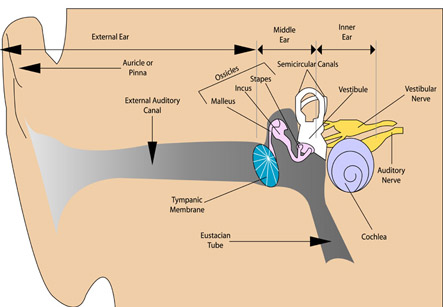Deafness
Introduction
Stem cells are considered as the building blocks of life. These cells have the remarkable potential for regeneration and development into various different cell types in the body during early life and growth.
Stem cell therapy involves the use of stem cells for regeneration of the diseased and damaged tissues or organs to improve the quality of life of people suffering from various incurable diseases.
Newer and advanced regenerative medicines can use stem cells to create living and functional tissues. This can help to regenerate and repair tissue and organs in the body which are damaged due to age, disease and congenital defects. Stem cells have the power to migrate selectively to these damaged areas and develop into new cells and tissues by performing a repair and a renewal process. This can possibly result in anatomical as well as functional restoration. Regenerative medicine has the potential to provide a cure for failing or impaired tissues.
A new treatment using human embryonic stem cells has successfully restored some hearing to previously deaf gerbils, according to a research.
Iranian scientists have moved to the forefront in embryonic stem cell research, according to a recent joint study by Harvard University and the Massachusetts Institute of Technology

Hearing loss:
Hearing loss is generally a result of the interruption of two different types of cells:
• The loss of hair cells in the ear, which convert sound vibrations into electrical signals
• The loss of the auditory nerve, which transmits the signals detected by the hair cells to the brainstem.
Although cochlear implant therapy has been proven effective in restoring hearing in cases of hair cell damage, no such treatment is available for roughly 10% of the cases in which the auditory nerve itself is damaged.
Procedure:
Solving this problem of such nerve deaf people is the driving force behind stem cell research and the promise of tissue engineering in otolaryngology. The hearing aids and cochlear implants can provide good recovery of hearing function. However, the development of a biological method to repair the damaged cochlea has the potential to restore normal hearing without the need for any type of prosthesis.
One approach to restore hearing by this method might be the surgical placement of stem cells within the cochlea in such a way that they would adopt the anatomical and functional role of the remaining cochlear structures and hair cells. Scientists believe that this is a practical approach as unlike most organs that are destroyed by disease; the inner ear usually remains structurally intact.
By mimicking the steps involved in the formation of embryonic mouse ears, some scientists have produced stem cells in the laboratory which look and act very much like hair cell. If they can generate hair cells in the millions, it could lead to significant scientific and clinical advances for curing deafness in the future.
A new treatment using human embryonic stem cells has successfully restored some hearing to previously deaf gerbils, according to a research.
A promising source for production of hair cells comes from induced pluripotent stem cells (iPS)—adult cells, taken mostly from a patient’s own skin. They can be genetically reprogrammed to revert back to stem cells. This breakthrough research represents a major opportunity for treatment of a patient with his or her own cells.
Many researchers are working toward producing human hair cells in a culture dish. This work could lead to many novel therapies based on cell transplantation. Equally exciting is an on-going approach to use embryonic stem cells for discovery of novel drugs that can be useful for the treatment for deafness.
The prospect of applying this treatment on humans is a few years away. Eventually this therapy could be used to treat a condition called auditory neuropathy, which affects a considerable percentage of deaf patients. The stem cell treatment could potentially change the lives of millions of deaf people.
This is just the latest development in treatment options for deaf people. There was a time when the only choice was whether to wear a hearing aid or not, but nowadays more and more deaf people are choosing to have a cochlear implant. With time stem cell treatment may prove to be a boon for deafness patients.